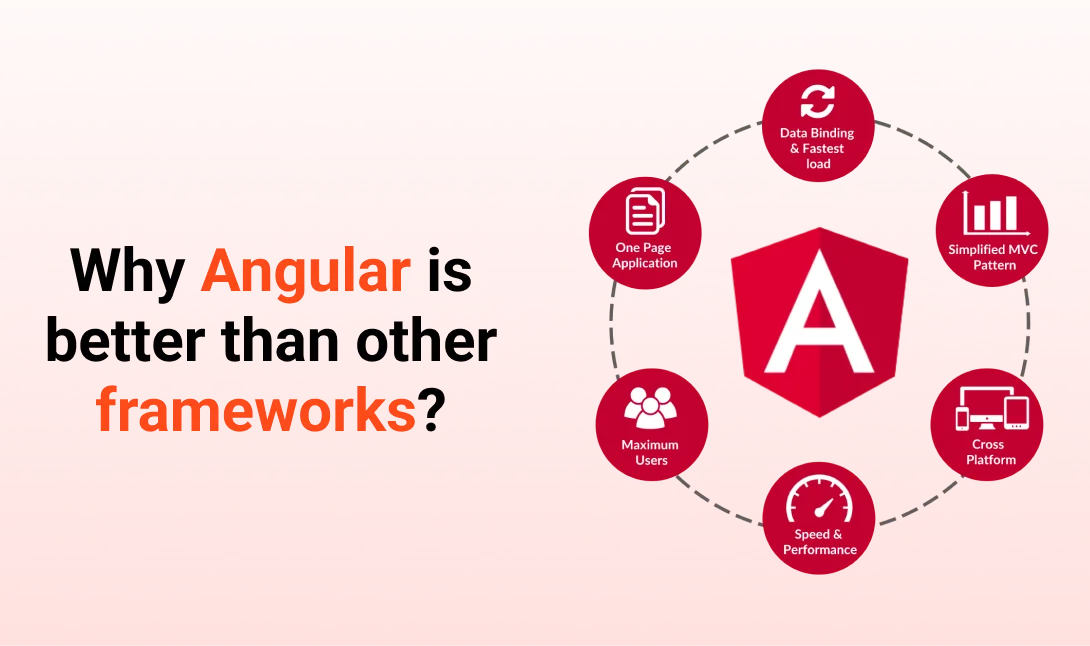Flutter vs. React Native: Which One to Choose in 2024?
Both Flutter and React Native are popular cross-platform frameworks for mobile app development, and the choice between them depends on your project's needs and preferences. Here are some things to consider:

React Native and Flutter are both mobile app development technologies. They help build interactive applications for Android
and iOS. Since they both serve the same purpose, it is crucial to understand the differences between them and choose the
right one for you. This article on Flutter vs. React Native will help you with it. Now that you know what’s in store for you,
let’s begin.
What is React Native?
React Native is a framework that combines the best parts of native development with React to build user interfaces.
It lets you build mobile apps using only JavaScript. These mobile applications are downloadable on Google Play Store and
Apple Store.
Pros:
1.Use of Native UI components
2.Library of pre-developed components
3.Access to native features of devices
4.Highly reliable
5.Fast reload process
6.Can write platform-specific code
Cons:
1. Complex UI structure
2. Sticky navigation
Apps Developed
1. Facebook
2. Skype
3. Vogue
4. Bloomberg
5. Tesla
What is Flutter?
Flutter is a cross-platform mobile app development framework developed by Google. It gives developers an easy way to build
and deploy visually attractive, natively compiled applications for mobile (iOS, Android), web, and desktop, all using a
single code base.
Pros:
1. A complete development package
2. Highly customizable and reliable
3. Support by Google
4. Fast reload process
5. Open source and free to use
Cons:
1. Size of application
2. Need native tools to create a build
Apps Developed
1. Alibaba
2. Hookle
3. Topline
4. Offline Pal
5. Hamilton
Although both frameworks are open-source and backed by large organizations, they are very different from each other in
many areas. Major differences are Language, User Interface, Performance, Developer Support, Adoption, Stability, Corporate Support,
and Popularity. Let’s go through all the points mentioned above, one by one, to understand the difference between these two
hybrid platforms.
Language
React Native is entirely written in JavaScript using React. This is an advantage for React Native since
JavaScript is one the of most popularly used languages in the world today. Hire React Native Developer or a dedicated development team with expertise in HTML + CSS, JSX, JavaScript Fundamentals + ES6, DOM manipulation, Redux, Node + NPM, and more.
Flutter is written using a language called Dart. Dart is a programming language introduced by Google in 2011 and
rarely used by developers.
User Interface
React Native is based more on native components for both Android and iOS devices. It offers an extensive
collection of external UI kits that helps in creating beautiful user interfaces for your applications.
Flutter uses proprietary visual, structural, platform, and interactive widgets. These widgets are built-in UI
components that replace native platform components.
Performance
React leverages JavaScript to connect to native components via a bridge. As a result, the speed of development
and running time is slower than Flutter.
There is no interconnecting bridge for initiating interactions with the device’s native components. Hence,
interactions with native components are faster, improving the overall performance of the application.
Documentation
React Native offers general documentation. The framework depends on external dev kits extensively. The documentation
is not as straightforward as that of Flutters.
It provides documentation that is easy to read, thanks to its format and detailed content. The documentation is
also more streamlined and straightforward.
Popularity
React Native is widely adopted and is a more popular app development framework than Flutter. React developers
can quickly develop react native mobile apps, which encourages more developers to use this framework.
Flutter is relatively new, and though it has gained some attention lately, it is still way behind in developer
count. Since Dart is a new language, the adoption rate among developers is slightly lower.
Community Support
React Native, released as open-source on GitHub in 2015, is the most popular framework on Stack Overflow and
is backed by a vast community with over 310,507 tagged questions.
Flutter is a relatively new framework that has a smaller community. However, more and more developers are adopting
it slowly. It has over 89,638 questions on Stack Overflow.
Industry Trends
According to the recent Stack Overflow survey of 2019, 62.5% of developers loved React Native. Since it has been
around for a while now and uses React and JavaScript, it leads to better job opportunities.
Flutter ranked higher with 65.4%. Flutter is comparatively new and is used less by companies. This leads to fewer
job opportunities. However, this may not be the case a few years from now.
Which is Easier to Learn: Flutter or React Native?
There is no easy answer when deciding whether Flutter or React Native is easier to learn. Both frameworks have unique benefits
and drawbacks that must be considered when determining. However, if we had to choose one, we would say Flutter is slightly
easier to learn than React Native. Flutter uses Dart, a relatively easy language to learn, while React Native uses JavaScript,
which can be a bit trickier.
Conclusion
In conclusion, both Flutter and React Native have their unique strengths and advantages. While Flutter offers a faster
development process, better performance, and a consistent user interface, Hire flutter developer for mobile app development. React Native has larger community support and a more versatile codebase.


Need a Successful Your Project?



